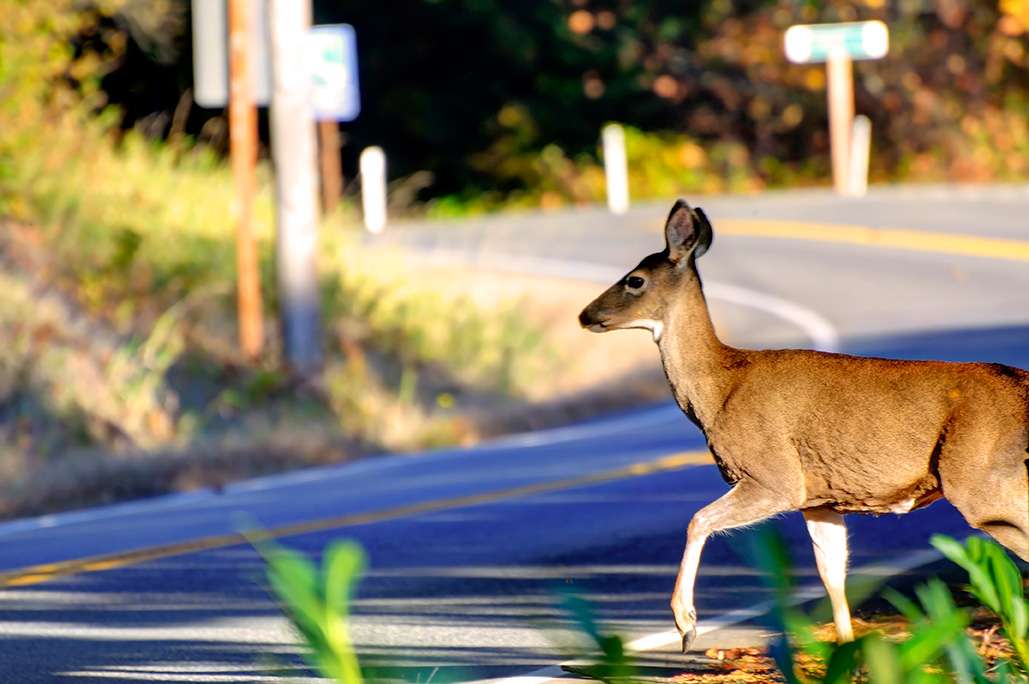Steer Clear, Spring is Here

Spring Awakening
Ah… Spring! The snow has finally melted and we are welcomed into a colorful new season. This time of year is energizing—It may be the morning dew, the crisp air, or the budding trees. Maybe it’s the glimpse of sunshine and warmer weather. As the daffodils are in bloom and new growth sprouts, we won’t be the only ones with a renewed sense of being.
This season is notorious for animals beginning to seek out new food sources after the scarcity of such throughout winter. Furry creatures like squirrels, opossums, rabbits, and deer will start to forage come Spring, dramatically increasing the wildlife activity after their long winter’s rest. Deer are in their pre-fawning period and are scattering to find their own territories, which brings them to the edges of the woodlands. According to the Federal Highway Administration, nearly two million of our furry friends will cross the road only to meet an early demise.
At NTB, we are no stranger to the animals of the Upper Midwest region where we operate. That is why it is important for all drivers to be knowledgeable about their environment so we can haul safely.
Danger on the Road, Stay Prepared
Roads and highways are critical for the transport of freight to every corner of the United States, but the heavily trafficked thoroughfares inevitably cut through animal habitats. When animals, large and small, make their way across our roadways, it’s possible for accidents to occur. This can be particularly dangerous if you are not prepared or are unfamiliar with the region you are traveling. We have compiled a list of do’s and don'ts when it comes to animals and the road:
DO be aware of when animals are most active. The Wildlife Collision Prevention Program states that wildlife is most active when the skies are beginning to transition through dawn and dusk. These are the times when wild animals are leaving or returning to their dens and when traffic volumes are high. Be extra cautious while on the road and let off the accelerator when you spot wildlife, as you never know when they might dart into traffic.
DON’T swerve to avoid hitting an animal. As much as you want to save a cute little critter, swerving can cause a much bigger accident. Even for deer and other large animals, the safest approach is to remain in your lane and apply brakes as needed.
DO pay extra attention to your surroundings. Note if you are driving through two-lane roads with low traffic that border wooded territories, rivers, or streams. This is where animals thrive and convene and it’s important to be alert in these areas.
DON’T toss that apple core out the window. Many drivers do not realize that food thrown from the vehicle will attract those cute critters to the road. Be sure to dispose of waste properly to do your part for other drivers out there.
DO make sure to be mindful of weather and road conditions. As always, maintain distance from other vehicles to leave more stopping distance in anticipation of wet and slippery roads and foggy conditions.
Summary
The Federal Highway Administration conducted a study and found that wildlife fencing that lines highways has reduced collisions by 87% over the last 20 years. The FHA has also implemented more prevention methods such as wildlife crossing structures, animal detection systems, and public education programs devoted to bringing attention to these issues.
In the meantime, If you get a whiff of that stinky, skunky smell, know that other wildlife could also be near and where there is one, there may be more. Remember—stay on top of your driving game and watch out for wild game!
Spring to Work: Apply to drive with NTB
Ride with Pride: Shop NTB gear from mugs to sweatshirts.